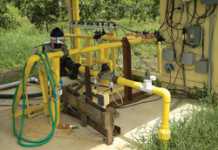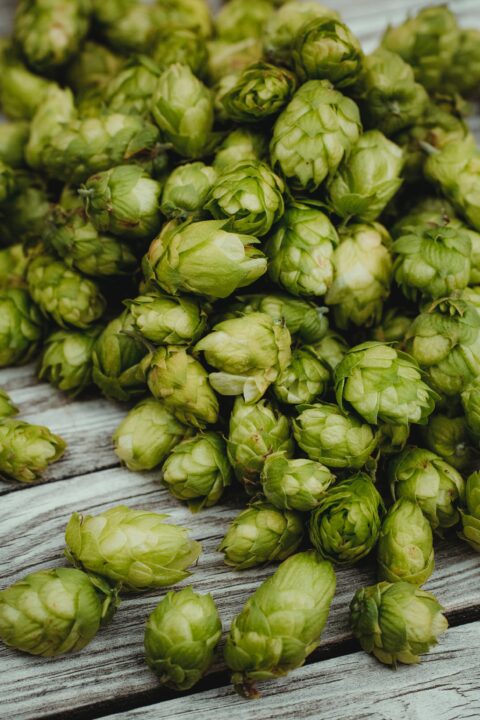Forward Progress In Citrus Production

Citrus tree acreage in Florida decreased to 576,577 acres in 2008, the lowest number of citrus-producing acres since 1966. Cited reasons for lower production acreage were urban development, canker, and citrus greening. Acreage decreases were recorded in 25 of the 30 counties included in the annual citrus tree survey. Improved tree growth from intensive management practices could reduce the time required from planting to economic break-even production, thus providing potentially valuable management options in light of current devastating diseases. Current best management practices (BMPs) are based on research under low-intensity management systems that apply both water and nutrients at less-than-optimal intervals. However, production systems that combine grove design and irrigation management to increase yield and grove operational efficiency are just now being studied in Florida.
Systematic Success
New production concepts have the potential to make the Florida citrus industry more efficient and economically competitive. The two basic grove production components are the high tree density and open hydroponic system (OHS) that forms the basis of the advanced production system (APS).
The fundamental concepts of APS/OHS for citrus are intensive grove designs with higher tree density (250 to 500 trees per acre) and intensive water and nutrient management to improve tree and crop development. These concepts are designed to more fully and efficiently exploit a citrus tree’s potential by providing optimal conditions. Those improvements are expressed in maximizing water and nutrient use efficiency and concentrating roots within irrigation zones, which should lead to less nutrient leaching.
The goals of OHS are to increase initial tree growth rate, establish early sustained fruit production, maximize efficiency of production inputs, and improve return on investment to achieve profits in as short a period of time as possible. To accomplish these goals within the framework of Florida’s environmental needs and parameters, three fertigation concepts have been developed: 1) maximization of water and nutrient use efficiency, 2) concentration of roots in the irrigated zone, and 3) reduction of nutrient leaching. These goals and concepts have been incorporated in the APS that utilizes OHS along with tree-planting density and tree-size control.
Open Hydroponic System
OHS is an integrated system of practices including irrigation, nutrition, and horticultural practices that was developed in Spain in the early 1990s to contend with low fertility soils. An OHS functions by increasing productivity by continuously applying a balanced nutrient mixture through the irrigation system, limiting the root zone by restricting the irrigated area, and maintaining the soil moisture near field capacity. OHS has been successfully used in the production of peaches, almonds, grapes, citrus, avocados, and several vegetable crops in Spain, South Africa, Chile, Argentina, Morocco, and California. In South Africa and Australia, commercial growers have adapted the OHS through use of drip fertigation on a daily basis during daylight hours resulting in increased citrus yield and fruit size. Selected citrus-production practices are being adapted for OHS/APS practices for higher density citrus plantings in Florida at several locations.
High-Density Planting
The ideal grove is one in which there is rapid development of trees to bearing volume with sufficient bearing volume to support high levels of cropping. Such groves provide certain known advantages related to production, harvesting and returns, but to be successful, smaller-sized, closely planted trees are essential. The practices and concepts that constitute the OHS are an excellent match with higher planting densities. In Florida, citrus studies involving tree density, higher planting density produced higher early production and utilized nutrients and irrigation water more efficiently. Those studies demonstrated the feasibility of higher density plantings for Florida citrus, but the trials were conducted under lower trees planting densities than proposed for the future with OHS and under less intensive management. Thus, there is a possibility of further increasing yield per unit area using OHS with densely planted citrus trees.
The Right Rootstock
Rootstock selection along with tree planting density is a key element in the APS/OHS approach to the future. Vigorous, large trees are neither compatible with close spacing nor productive in their younger years. Thus, in a world of economic necessity dictated by early and robust returns, small, closely spaced trees become a required component of the new production concepts. From recent research, it is apparent proper matching of tree size with spacing and site conditions is critical for success. When that combination is achieved, the higher density grove will outperform the more conventional one especially in the early years.
Advanced Logic
APS use a more intensive nutrition program with the goal of pushing trees into a higher level of vigor and productivity requiring higher nutrient application rates to maintain production. Considering current BMPs and potential improvements in nutrient use efficiency, a goal for successful adoption of OHS in Florida will have to be more efficient use of applied nutrients and less associated leaching. Studies on tree-root density distribution have been done in Florida and other parts of the world. In Florida, it was found that microsprinklers increase root length density distribution with distance from the tree trunk as trees grow, resulting in large expansive root systems that must be irrigated. Limited data is currently available on tree growth and productivity under Florida conditions, but the use of OHS has been shown to limit root growth to within the limited irrigated zone, even after the summer rainy season. Reduced canopy growth or a reduction in yield per tree has not been observed to date in OHS.
Special thanks to KeyPlex for sponsoring this series on research presentations from the 2010 Florida Citrus Show.









